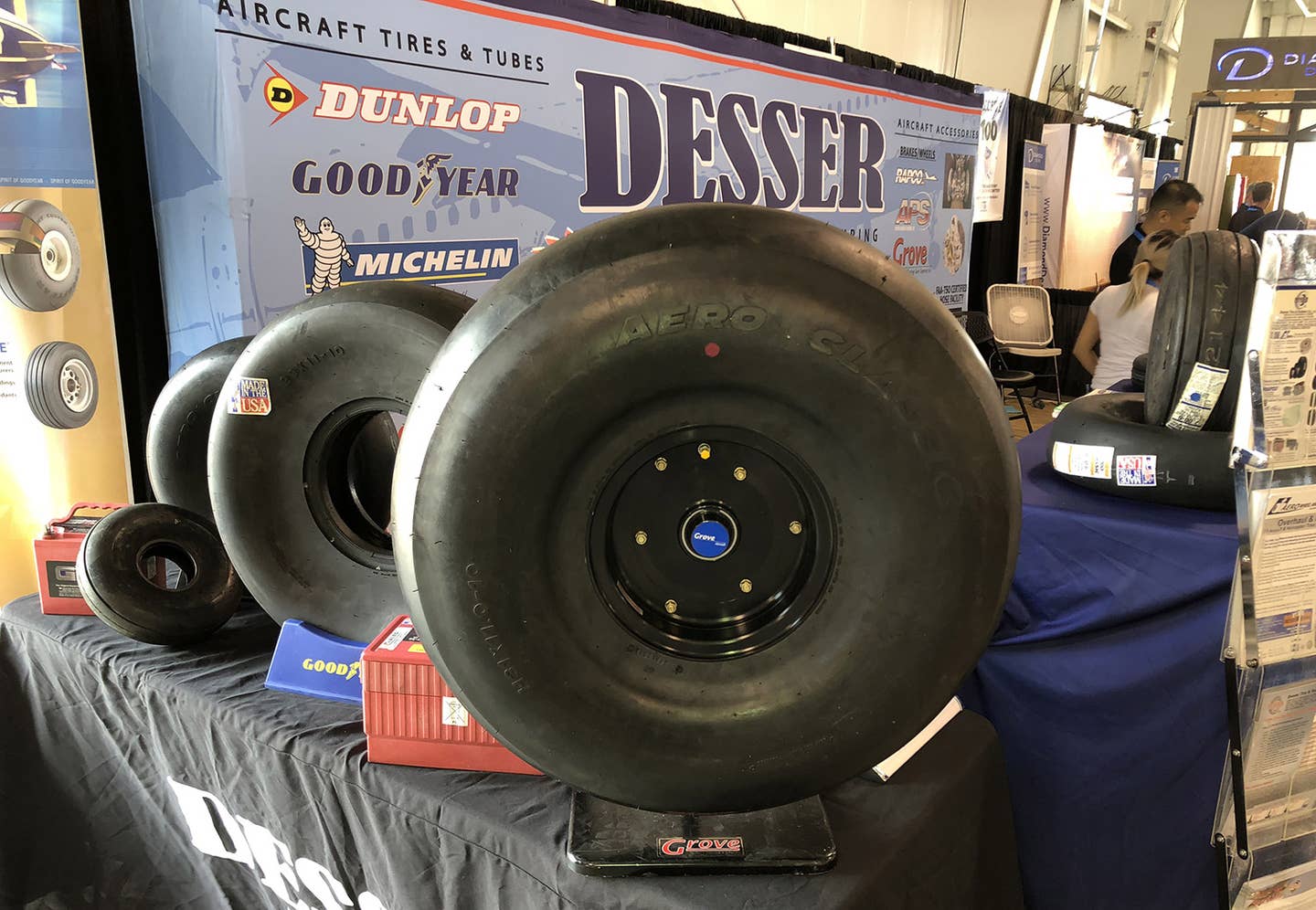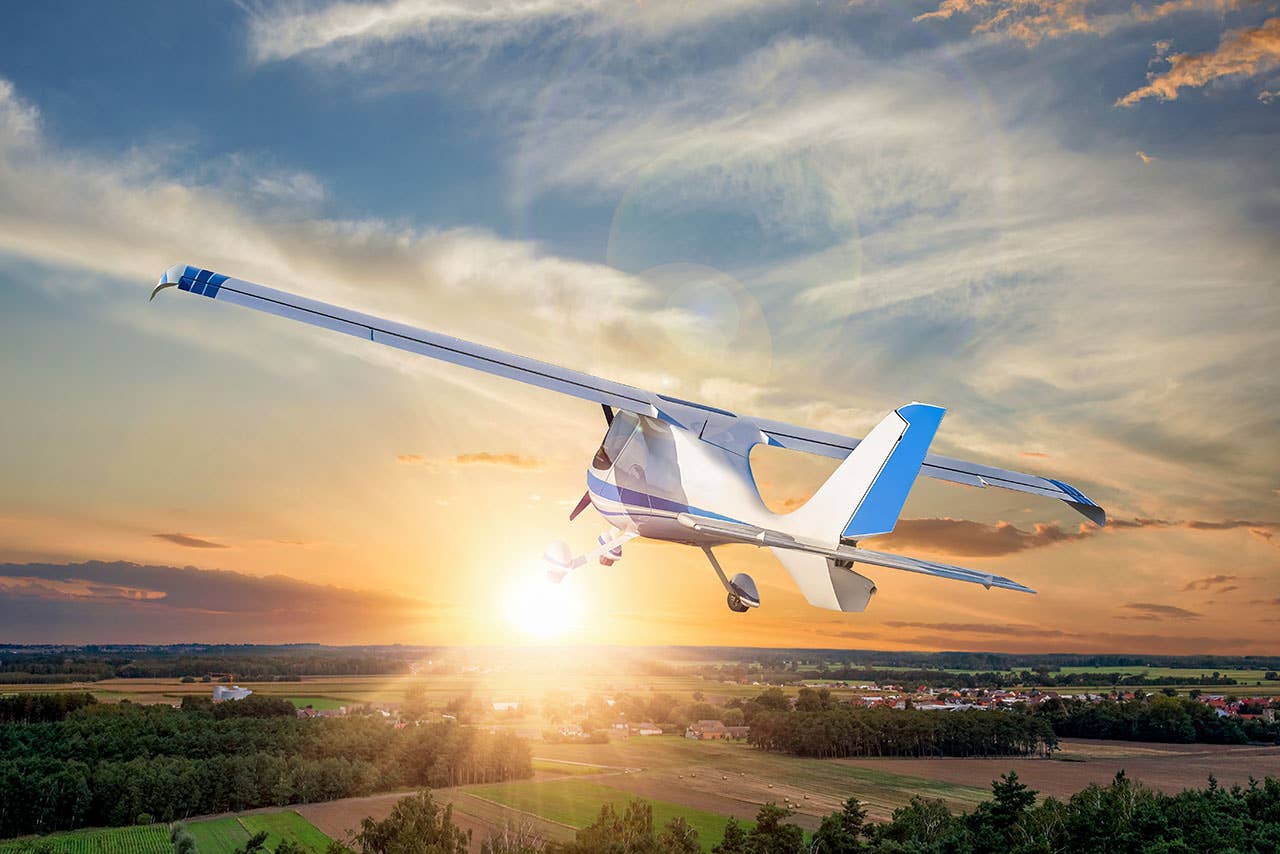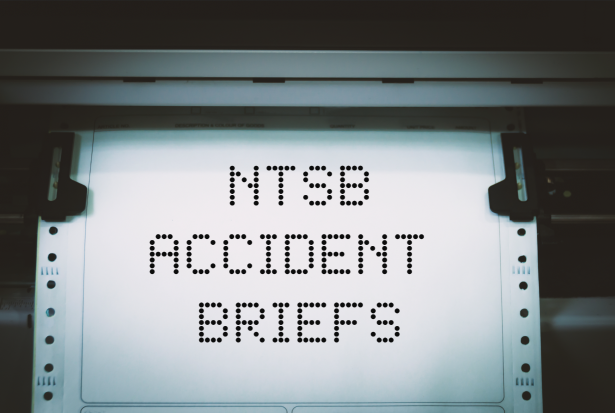Our 10 Favorite Cirrus SR22S
Airplanes that stand out from the crowd and make us take notice
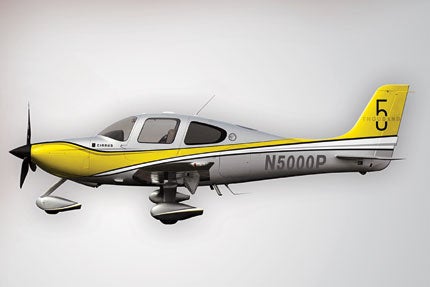 Sexiest |
It's fair to say that Cirrus changed general aviation in a way that hasn't been seen since the halcyon days following World War II, when it seemed everybody built airplanes. In those golden years, every design that rolled off the line was embraced by pilots with a sense of breathless enthusiasm. But years of stagnation and economic downturns chipped away at those legendary manufacturers, and an increasingly litigious society made designing new aircraft an expensive and speculative venture. So those venerable legacy airplanes soldiered on, sporting cosmetic redos, overhauled engines and better avionics; each year getting older. And then along came Cirrus.
Cirrus started from scratch with nothing but a blank sheet of paper. They designed their airplane around a sphere instead of a rectangle. They simplified the systems, panel and cockpit of the airplane, committed to new materials and manufacturing methods, and rethought the idea of what a GA airplane is. In the process, they demonstrated that pilots need not be superhuman, square-jawed aviators with "The Right Stuff," but could be regular people who just wanted to go from here to there safely and efficiently. Cirrus is turning thousands of would-be pilots into owner pilots, and that's simply good for GA.
Since Cirrus aircraft---and especially the SR22---are spreading like seeds to ramps everywhere, we present a "Top 10" list of sorts, without the late-night band or smarmy host. Instead, we look at what people across the nation are doing with these special aircraft, and offer up our favorites.
Sexiest
In the midst of celebrating 10 years of the SR22, Cirrus is getting ready to deliver its 5,000th airplane. To commemorate the occasion, the designers and engineers pulled out all the stops and created this sizzling rocket. Looking like a Ferrari with wings, this one-of-a-kind SR22 definitely earns the adjective "sexy." "When you're only creating one airplane, it opens up all kinds of design possibilities," says Alex Alequin, Product Design Coordinator for the SR22. "This model is completely innovative, from the asymmetrical paint scheme to the sports-car-like interior." Alequin couldn't say what performance enhancements this 5000th SR22 has (as of this writing, it's still confidential), but he did say, "It's loaded to the gills." This hot number sports a gloss-black, carbon-fiber spinner, and is the first Cirrus to use gloss-black paint on areas like the wheel pants and wingtips. The inside is completely black, except for sunburst yellow accent stripes that echo the outside color and feature a "5 Thousand" logo. Designed like a race car, the black interior offers a high-tech performance feel, with stitched-leather details and carbon-fiber panel accents. Built on the same platform as the Limited Commemorative Edition (LCE), this SR22 opens customers to the world of "Xi"---a new edition that allows buyers to customize virtually anything on their airplane.
 Best Deed |
Best Deed
Reading an online pilot board after the tragic Haiti earthquake in 2010, SR22 owner Stuart Smith was touched by a wish list of supplies posted by a doctor. "The list was heartbreaking---it noted things like hacksaw blades for amputations," says Smith. In seeing photos from the devastation, Smith noticed the kids that seemed the happiest had some sort of stuffed animal to hold onto. "Comforting adults were obviously in short supply," he says. Smith and his wife, Tracey, made a plea to a local high school for donations, not really having much of a plan beyond that. "One girl donated her entire collection of 300 Beanie Babies," remembers Smith, "and we got crutches and other medical supplies." They hooked up with Bahamas Habitat, who were coordinating air flights into Haiti, and found themselves a few days later in Nassau flying supply runs to Haiti and Florida in their 2006 SR22 filled with Beanie Babies. It's Smith's second Cirrus, and has the Tornado Alley turbocharger mod. "We were overwhelmed by so many pilots willing to drop everything and help in Haiti," recalls Smith. "And the Cirrus was the perfect airplane for the mission. We love it"
 Best Owner's Touch |  |
Best Owner's Touch
Anisa Shahin was tired of FBOs asking where her pilot was whenever she'd show up to go to her SR22. So she did what any smart female airplane owner would do: She painted her airplane purple and added swirls and "curly-Qs." The result? "Nobody tells me ’your pilot isn't here' anymore," laughs Shahin. "I just wanted a personal touch so I'd know it was my airplane. When I see it, it makes me happy." Shahin helped design the color scheme, which was done by Air Graphics in Middleton, Wis. "I've always loved purple, and it looked good with silver." Shahin's original inspiration came from her own company's logo and an athletic T-shirt she owned. The two combined create a soft and pleasing look. "But it's subtle," adds Shahin. "Guys will come up and say, ’Yeah, I'd still fly that plane.'"
 Most Useful Retrofit |
Most Useful Retrofit
Florida-based Paul White ordered his SR22 in 2001, and had to wait two and a half years to get it. After putting 2,000 hours on the airplane, White lost his medical in 2005, and ended up selling the airplane to his medical examiner. White regained his medical certificate in 2008, and bought the airplane back again. Today White says he has the unique distinction of having bought the same airplane twice, and waiting two and a half years each time to get it. White got rid of his original steam-gauge six-pack last year, and installed the three-panel Aspen glass cockpit. "It's fantastic because I have two electrical busses and two more batteries in the MFD and PFD," he says. "I get about one full-hour backup if I lose everything." White says the dual AHRS gives him peace of mind, and the entire system is intuitive. "The Aspen really makes this a great airplane." White uses the Aspen three-panel system to its fullest, having flown to 47 of the 50 states in his Cirrus, and still flying more than 120 hours a year.
Hardest Working
If anybody would know airplanes, it's the National Test Pilot School. Based in Mojave, Calif., the school attracts the best of the best, from foreign military pilots to American test pilots and flight-test engineers. The National Test Pilot school also has a fleet of three Cirrus SR22s it uses for a variety of missions. "The SR22's main role is flight training and avionics testing," says the school's Director, Greg Lewis. "Interestingly, out of our 37 aircraft, The SR22 is the highest-ranked for its purpose." The SR22 isn't used to teach pilots how to fly, of course, but serves as a test bed for evaluating and measuring flying qualifications and systems. One example is workload evaluation. The SR22 is used to develop tests to measure cockpit workload. The school's fleet of SR22s (Generations 1, 2 and 3) also assesses systems and trains flight-test engineers. "We use them for evaluating terrain warning systems, TCAS, FLIR and even takeoff and landing performance," says Lewis. The school's SR22s are in the Experimental category, with nonstandard modifications like FADEC and removal of the Cirrus aileron-rudder interlink.
You're In The Air Force Now
|
|
In a historic milestone, the United States Air Force Academy recently selected the Cirrus SR20 as the training aircraft for its Powered Flight Program. The Academy had used the Cessna 172 (Designated "T-41") as its training platform into the late 1990s when it contracted out the task to civilian entities using Diamond DA20s and DA40s. The USAF Academy will take delivery of 25 SR20s (designated as the "T-53A Trainer") beginning now through 2012. "We've been studying the replacement of our existing trainer fleet since 2010," said Lt. Colonel Brad Oliver with the academy's 557th Flying Training Squadron. "The Tâ53A meets or exceeds all of our performance and operational criteria, and is very wellâsuited to our mission. And, while we hope that we never have need of it, our cadets and instructors will now have the option of pulling the 'chute if it's needed." The Academy's SR20s will be equipped with the Cirrus Airframe Parachute System (CAPS), integrated fuselage roll cage, cuffed wing design, Cirrus Perspective by Garmin, airbag seatbelts and other safety features that are standard equipment on all Cirrus aircraft. The Academy's T-53As will have the rear seats removed. The trainers will be powered by the Continental IO-360 engine. Each aircraft will be "militarized" by receiving the famous USAF "stars and bars" paint scheme that will separate them from all civilian SR20s. The T-53As will be based at the Air Force Academy's airfield in Colorado Springs, Colo. Recently, the U.S. Air Force sent test pilots from Edwards Air Force Base to fly the first two T-53As delivered to verify their performance and characteristics. More T-53As will be arriving into next year in the purchase deal worth approximately $6.1 million according to Cirrus. |
|
 Best Retrospective |
Best Retrospective
Cirrus introduced their Centennial Edition SR22 back in 2003 to commemorate the Wright Brothers' first flight. Pilot Brian Vidor (who also owns Santa Monica Airport's popular Typhoon restaurant, www.typhoon.biz), purchased the Centennial Edition for both work and pleasure flying. The elegantly distinctive design features a linen-white base paint that's meant to evoke the color of the linen wings on the original Wright Flyer. Cirrus wanted to create this edition with one foot in the past and one foot pointing squarely toward the future. The design is subtle and features some nice touches, like a Wright Flyer graphic on the tail, color-matched, three-bladed prop and spinner combination, and cocoa leather seats with a special, embroidered "centennial" logo. This edition also featured the 310 horse-power Continental Platinum IO-550 engine, and a host of personalized gear, like umbrellas, jackets and matching luggage! Only 100 were made.
 |
Most Interesting Mission
Cameron Beckman is a pro golfer based in Texas. He earned his third PGA Tour title last year at the Mayakoba Golf Classic. Beckman had a share in a CitationJet CJ1 that he used for traveling to tournaments though he was not a pilot. "I would sit up in the front," says Beckman, "and that's what got me wanting to learn to fly." So, two years ago, the Minnesota-born Beckman bought a 2010 Cirrus SR22 Xi in which he could both learn and commute to tournaments. Today, Beckman has 120 hours under his belt as a pilot but hasn't been able to finish his private certificate due to the grueling golf pro Tour schedule. "I travel to tournaments to learn how to fly!" laughs Beckman, who travels with a CFI. He's planning on taking his checkride before the end of this year, and has become a fan of both the SR22 and its Perspective glass panel. "It's incredible," he says. "I went to Corpus Christi to play golf but flew the whole trip myself. This airplane is really amazing."
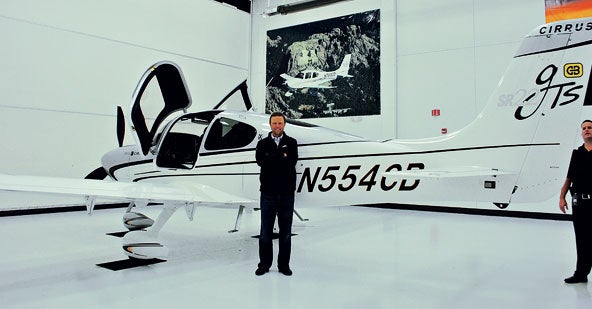 Most Interesting Mission |
 Avidyne R9 |
Best Use Of The Avidyne R9
Since it was introduced, Avidyne's R9 glass panel has piled up the accolades. But few pilots seem to use the incredible system to its full extent. That is, until you talk to Thomas Close. Close is a guru of the R9, and knows it better that just about anybody else we've talked to. A retired United Airlines Captain and one of 10 members of ANFST (Avidyne National Flight Standards Team), Close owns a 2004 SR22 with the R9 system, and flies some 300 hours per year. "The R9 is a shallow and broad system, as opposed to deep," explains Close. "All its functions lie in tabs within page function keys that are easy to get to and always there." Even spending a few minutes talking about the R9, it becomes apparent his knowledge could fill a book. Close's favorite R9 feature? The "Line Select Key 5" function. "The cognoscenti call it ’the Butler,'" says Close. "It provides useful flight-management features at the push of a button." His second-favorite feature? "The GFC-100 autopilot is extraordinary."
Zero To Private Pilot In 90 Days
|
|
It's another testament to Cirrus' simplicity that a zero-time pilot can earn his or her certificate in almost no time. James Duan was a zero-time pilot when he fell in love with the Cirrus. In August of 2010, Duan took the plunge and ordered a brand-new Turbo SR22. He took delivery of the red-and-white, two-tone beauty five weeks later, and began flight training in California with Cirrus Standardized Instructor, Ryan Farr. Once into flight training Duan had to take a six-week break to travel to China on business. After returning to California, Duan flew his turbo every day until he was comfortable enough to take his checkride. On December 3, 2010, Duan successfully passed his checkride in N369JD. Duan's accomplishment also demonstrates Cirrus' commitment to simplicity and their pursuit of buyers who may never have considered general aviation in another way. Ken Goble, Cirrus Regional Sales Director for Southern California, congratulated Duan for his accomplishment and presented him with a Cirrus plaque. Well done, James! |
|
 Best Modification |
Best Modification
When it comes to modifications, pilot Steven Grullon stopped at nothing to personalize the 2009 SR22 he flies for a private owner. First off, it's a 2009 with the Turbo Excite package. Grullon and the owner designed the paint themselves, choosing a beautiful deep red and adding reflective graphics and stripes that change colors from different viewing angles. The interior is all custom, with a caramel interior made of a special new fabric that mimics leather in every way but is lighter. Little details like controls that match the seats, a detailed baggage compartment and hand-stitching add to the allure.
But easily, the most distinctive feature is the four-bladed prop. "Ours is the first G3 Perspective Turbo model to have the four-bladed prop," says Grullon. "Flight Resource has the STC." The new prop gives the SR22 a completely different sound inside and out. "It has this whisper sound," Grullon explains. The four-bladed NT propeller yields better climb performance, better engine cooling and less drag than the Hartzell prop. The airplane is primarily used for pleasure flights between Florida and the Dominican Republic. "We use it like a car; to go pick up the dog or something we forgot," laughs Grullon. That's a dog that travels in style.
 Most Travelled |
Most Travelled
When Cirrus decided to expand their "Inside Cirrus" road show to Latin America, they had no idea how many countries they would be visiting. Starting in Mexico, Cirrus' blue SR22 made its way through all of Central America, stopping everywhere from Guatemala to Costa Rica, Panama and everywhere in between. In spring and throughout the summer, the SR22 continued into South America, stopping in Chile and crossing the Andes into Argentina and beyond. The road-show pilots added each country's sticker to the nose of the SR22 as it made its way throughout Latin America, looking like a veteran WWII bomber by journey's end. The mission into Latin America is a big step for Cirrus, launching new Cirrus centers in various countries, and offering demonstration flights at nearly every stop. For many Latin American pilots, it was their first up-close look at the SR22.
Turbo Cirrus Plus
|
|
The first production Cirrus brought a full-airframe parachute to general aviation, introduced glass panels to the industry and dramatically simplified the process of learning to fly. Nothing is perfect, however, and there were a few areas that needed additional tweaking. One was the wheel pants. The SR22 was designed with a full-castoring, nonsteerable nose gear, requiring most low-speed steering to be done with differential braking. Alan and Dale Klapmeier did an excellent job of designing highly efficient wheel pants, but the design may have been almost too good in one respect. The wheel pants were so tight and aerodynamically efficient, they minimized airflow across the brakes, and that resulted in insufficient brake cooling and occasional brake fires. Lopresti Speed Merchants of Sebastion, Fla., (www.speedmods.com) came up with a mod to cool the brakes and improve access to the tires in the process. Called Ice Skates, the STC'd Lopresti mods are constructed of a carbon-fiber sandwich with bromide in the resin (that won't support combustion). The pants incorporate a NACA scoop directly in front of the brake disc and an exhaust outlet at the rear of the wheel pant. Like cowl flaps in an engine nacelle, this helps suck airflow through the wheel pant to help control heating. Lopresti sells the Ice Skate wheel pants for $7,495 uninstalled. If that's not in your budget, Speed Merchants will modify your existing wheel pants to Cool Skates. These include the NACA scoop and vent and install the larger access door, all for $3,495. Warren Fletcher of Tampa, Florida, owns a 2009 Turbo Cirrus SR22-G3 with the LoPresti Ice Skate wheel pants, along with the dual Speed Merchant Boom Beam X3 HID lights in the wingtips. "The new wheel pants make checking the brakes and airing up the tires almost ridic-ulously easy compared to the stock Cirrus pants," says Fletcher. "The bigger access doors and button latch make it very easy to inspect and air up the tires. You have excellent access to everything. You can monitor the hydraulic lines for leaks at the same time and even examine part of the tire sidewalls." Fletcher flies his airplane at night fairly often and he feels Lopresti's X3 Boom Beam HID landing lights make a world of difference. "This Boom Beam offers a healthy 600,000 candlepower. With one X3 mounted in each wingtip, the Cirrus is so visible at night, I've had people comment that it looks like a DC-9 on approach," Fletcher remarks. "The runway is well illuminated from a quarter mile out on final. And when I'm in busy airspace, I'll often use the lights during daytime to make my airplane more visible to other traffic." The Boom Beams have no filament, so there's nothing to break or burn out. Each X3 consumes about half the electrical power of an incandescent bulb (1.6 amps) and is significantly cooler. As a result, the X3s come with a 5,000-hour warranty and sell for $1,299 a piece, uninstalled. The 300,000-candlepower X2 Boom Beams sell for $649. The Cirrus enthusiast also has an order in for Never Flat Lifesaver tires, a NASA variation on Good Year's Run Flat tires, and it's virtually impossible to have a blowout since the tire itself supports the weight of the aircraft---a good thing, since there's no air pressure. Lopresti's Never Flat replaces the steel belt with a high-strength, composite, graphite-epoxy band that's roughly the same weight as the steel belt but five times stronger. Similar to Kevlar in a bulletproof vest, this makes a puncture extremely unlikely, but unlike Kevlar, even if something does penetrate the tire, the basic structure is so strong that the tire won't collapse. Warranty is 10 years, and the tires can be recapped. Price is $1,299 for the two 6.00x6 Cirrus main tires. |
|
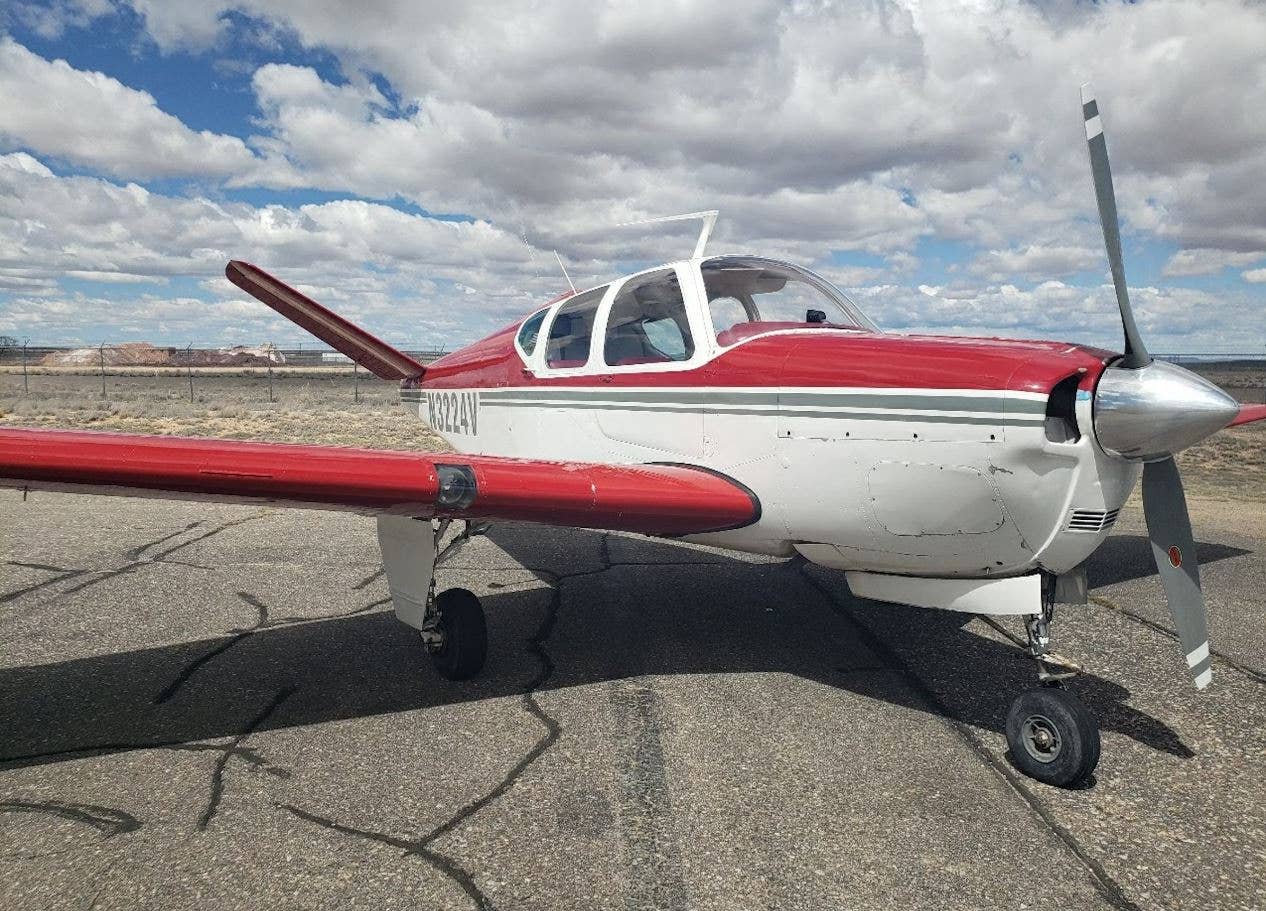
Subscribe to Our Newsletter
Get the latest Plane & Pilot Magazine stories delivered directly to your inbox




